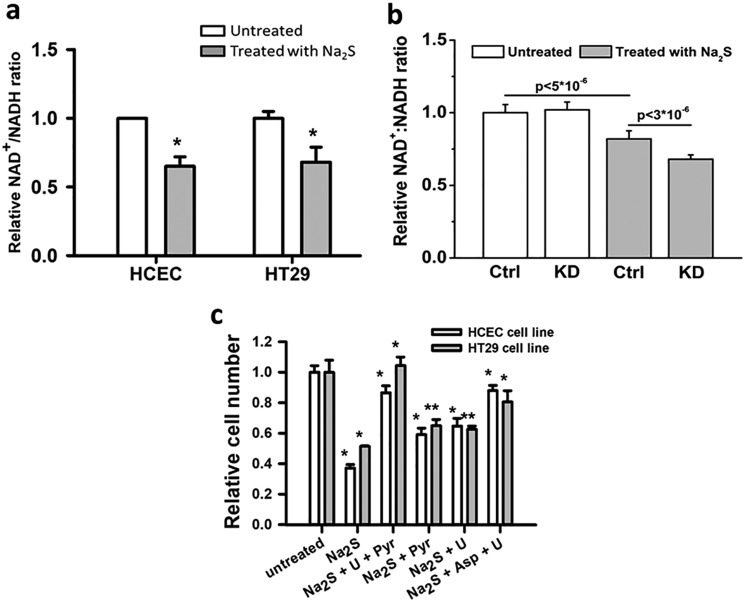Figure 10.
Growth restriction by H2S is due to electron acceptor insufficiency. a, a change in the NAD+:NADH ratio was observed in the presence of 0.1 mm Na2S (gray) compared with its absence (white). The NAD+:NADH ratios for untreated HCECs and HT29 cells were set at 1. The data are representative of five independent experiments, each performed in triplicate (*, p < 0.001). b, a difference in the NAD+:NADH ratio was observed in HT29SQRscr (Ctrl) and HT29SQRkd1 (KD) cells in the absence (white) and presence of 0.1 mm Na2S (gray). The NAD+:NADH ratio for untreated HT29SQRscr cells was set at 1. The data are representative of mean ± S.D. (error bars) of three independent experiments, each performed in triplicate. The p values are shown for the difference between HT29SQRscr cells with and without H2S and between Na2S-treated HT29SQRscr and HT29SQRkd1 cells. The difference between untreated HT29SQRscr and HT29SQRkd1 cells was not significant (p > 0.3). c, proliferation of HCECs (white) and HT29 cells (gray) at 48 h following culture in the absence or presence of 0.3 mm Na2S, uridine (U), pyruvate (Pyr), and aspartate (Asp) added at concentrations specified under “Experimental procedures.” The data are representative of four independent experiments, each performed in triplicate, and represent the mean ± S.D. (*, p < 0.001; **, p < 0.01).

